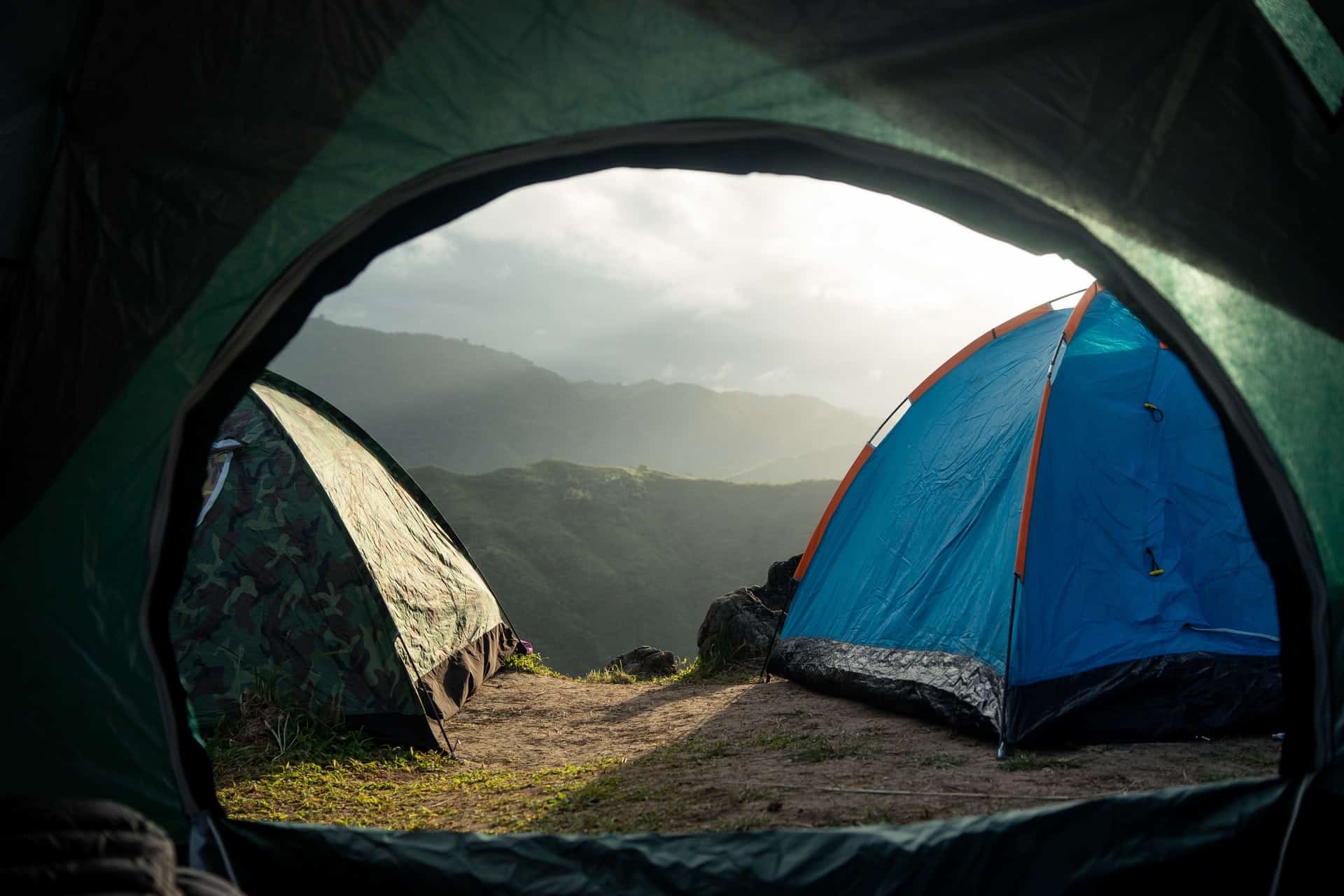Two popular options that work well as a ground cloth or footprint for a tent are Polycro and Tyvek.
Polycro vs. Tyvek: The Tyvek material is smooth and works well at preventing dirt and mud from sticking to the sheet. It’s lightweight and durable, although Polycro is overall a lighter material. Both options are affordable and lightweight enough to pack away and forget.
What is Polycro Material?
View the latest price on Amazon
Polycro footprints are considered ultralight and are strong enough to withstand rougher conditions. The membrane of Polycro is very rugged and is often used for shrink wrap and thermal layering in windows.
Polycro Advantages
Ultralight Weight
The material weighs so little which makes it a great option for ultralight backpackers or hikers. It can also be a downside since high winds could blow it away if the sheet isn’t weighed down or tied to the ground.
Affordable Cost
Polycro tops the list due to its affordability. Yes, it is one of the most affordable ground cloths available in the current condition.
All Sizes are Durable
The best part is that you can trim this ground cloth to get the right size without impacting the integrity. Even if it is not the toughest ground cloth, it will last for plenty of uses before it wears down.
Cons of Polycro Materials
It’s not Breathable
Even if Polycro is durable and lightweight, it has some downsides. As it is not breathable much, it can collect condensation and cause discomfort. After using it for a night, you can hang it to dry up. Also, you can lay your ground cloth under the sun. Once it is dried up, you can use it comfortably.
The Material can Shrink
Another downside is that the material can shrink a bit if exposed to heat for a long time. However, you can avoid such a possibility by avoiding constant sun exposure. Also, maintain the Polycro ground cloth properly to boost its durability.
What is Tyvek Material?

Tyvek is a 100% synthetic material that’s made up of dense polyethylene fibers. It’s known for being lightweight, water-resistant, breathable, and durable.
Advantages of Tyvek
Water Resistant
Compared to Polycro, Tyvek is closer to being waterproof, and perfect for stopping water from entering your tent or other gear.
Breathable
Another benefit is that it is very breathable considering how waterproof it is. It will not collect condensation if you use it overnight. Apart from that, it will not shrink like the Polycro if left in high heat and can last longer with minimal maintenance.
Durable
Tyvek is considered one of the most durable ground cloths, which is why it’s used in so many different industries. Since it’s very durable it does come at the cost of being a little heavier than other Polycro options.
Differences Between Polycro and Tyvek
The biggest difference between the two materials is the cost and weight of both materials. Polycro is one of the cheaper options for ground cloths, and one of the best lightweight materials around.
It’s relatively durable but it does require more work to keep it clean since it’ll most likely get wet overnight.
Tyvek is also affordable, although it costs more than Polycro footprints. It’s pretty heavy compared to other ground cloths, but it works well at staying clean and dry throughout the night.
Polycro vs. Tyvek: The Winner
Polycro is better if:
- You’re looking for a lightweight and cheaper material
- The extra maintenance to keep it clean is fine with you
Tyvek is better if:
- Durable but heavy material is what you need
- You’re okay with the loud sound of the material
If you want a breathable, affordable, and durable ground cloth, you can go with Tyvek. It will serve you for a long time. But you should be aware that it is a bit noisy and heavy as well.
However, if you want a lightweight ground cloth, you can go with Polycro. It is lightweight but not breathable. You will have to take extra caution if you choose this option since there’s a chance it could shrink over time.
Conclusion
Now you know the strengths and weaknesses of Polycro and Tyvek you can make the best choice for your situation. Overall, if you want a lightweight cloth, you should consider getting Polycro. For durability, Tyvek will be the better option and will last longer.


